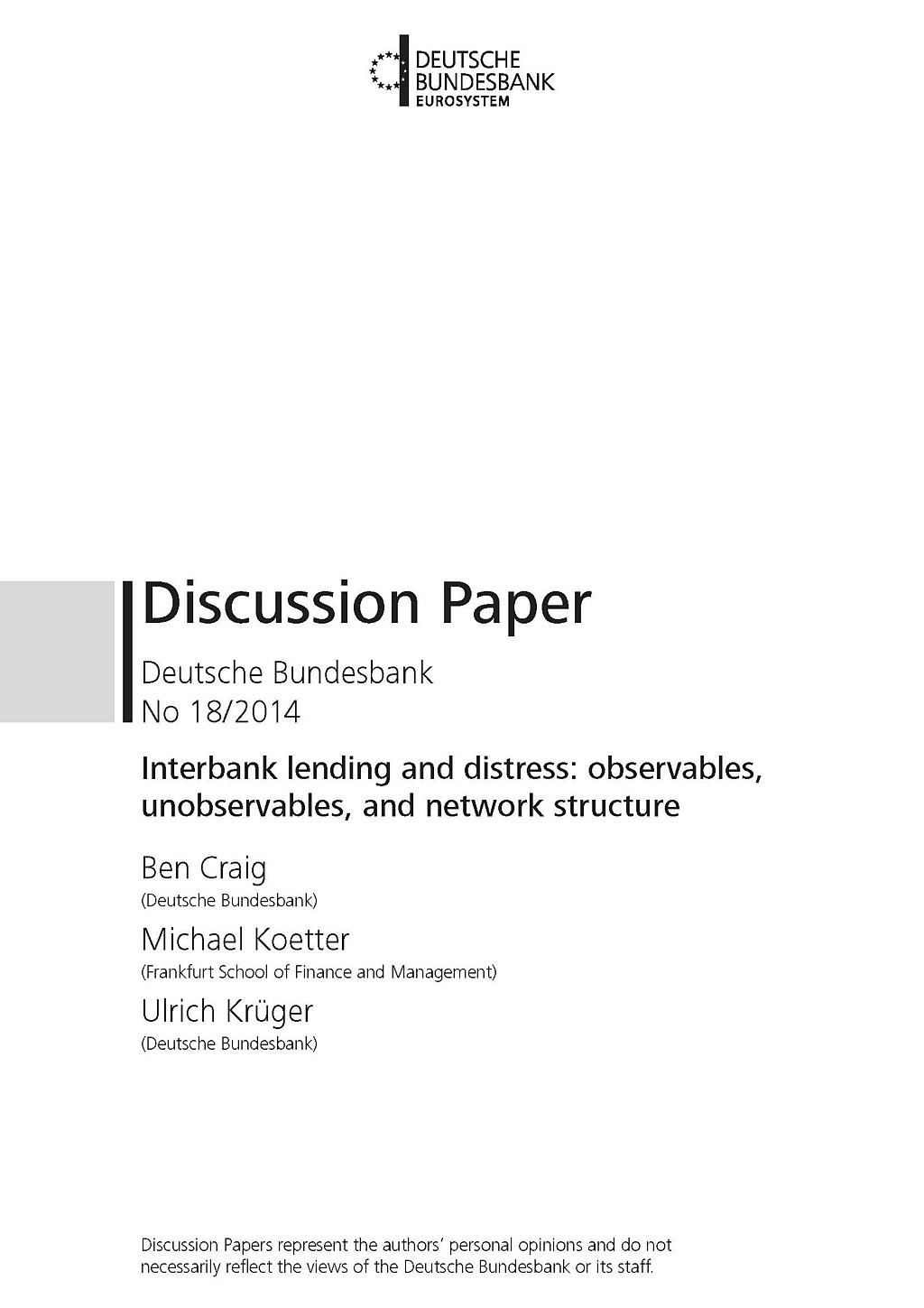
Interbank Lending and Distress: Observables, Unobservables, and Network Structure
We provide empirical evidence on the relevance of systemic risk through the interbank lending channel. We adapt a spatial probit model that allows for correlated error terms in the cross-sectional variation that depend on the measured network connections of the banks. The latter are in our application observed interbank exposures among German bank holding companies during 2001 and 2006. The results clearly indicate significant spillover effects between banks’ probabilities of distress and the financial profiles of connected peers. Better capitalized and managed connections reduce the banks own risk. Higher network centrality reduces the probability of distress, supporting the notion that more complete networks tend to be more stable. Finally, spatial autocorrelation is significant and negative. This last result may indicate too-many-to-fail mechanics such that bank distress is less likely if many peers already experienced distress.




